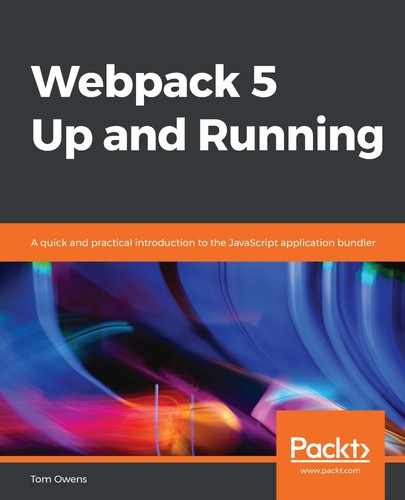This chapter has followed the practices of configuration files, asset management, and options. This chapter began by taking you, the reader, through the various capabilities of Webpack and configuration, and exploring how to manage those assets and control content accordingly. You were guided through both input and output management, and the loading of external content such as fonts and images. From there, this chapter took us through options and the difference between the two, explaining to the reader what can be achieved using options that can be set up simply through configuration.
You were then guided through common option methods and how to use them. You are now fully versed in options and configurations. You should now know the difference between the two and the best methods to adopt, given any number of possibilities that would require either technique.
In the next chapter, we will pry into the world of APIs' loaders and plugins. These features of Webpack expound the capabilities of the platform, springboarding from configurations, and options.
You will learn the difference between loaders and plugins, and the essential nature of loaders to use languages and scripts that are not supported by default. Much of these loaders are supplied by third-party developers, so plugins fill gaps in capability where a loader cannot be used—and vice versa.
The similar topic of APIs will then be expanded upon. APIs are essentially used to connect an application to remote applications on a network. This gives them a similar characteristic to loaders, and they are often used where a native script is not available.
